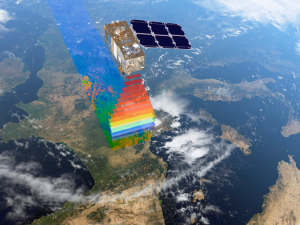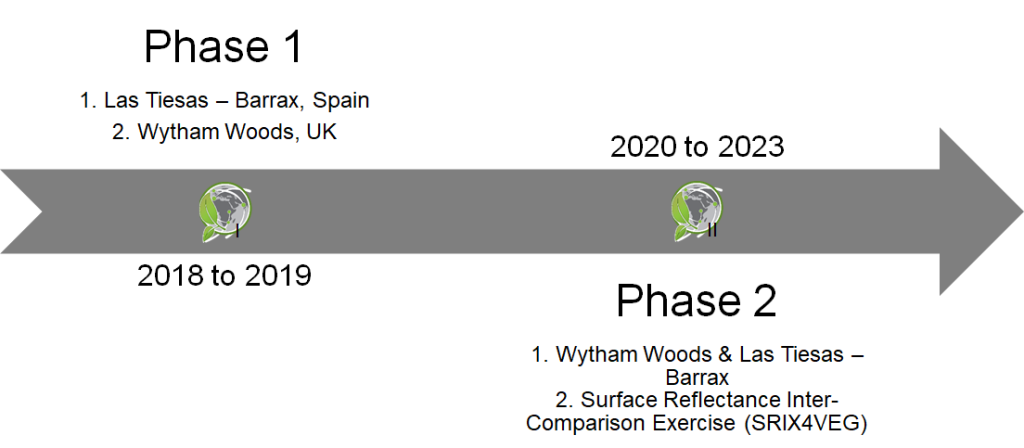
Sentinel-2. Image: ESA/ATG medialab.
Fiducial Reference Measurements for Vegetation (FRM4Veg) is a European Space Agency (ESA) managed project focused on establishing the protocols required for traceable in-situ measurements of vegetation-related parameters, to support the validation of Copernicus products from Sentinel-2, -3, and PROBA-V.
FRMs are ‘the suite of independent ground measurements that provide the maximum return on investment for a satellite mission by delivering, to users, the required confidence in data products, in the form of independent validation results and satellite measurement uncertainty estimation, over the entire end-to-end duration of a satellite mission’. FRMs should:
- Have documented SI traceability (or conform to appropriate international community standards).
- Be independent from the satellite geophysical retrieval process.
- Be accompanied by an uncertainty budget for all instruments and derived measurements.
- Adhere to community-agreed, published and openly-available measurement protocols/ procedures and management practices.
- Be accessible to other researchers allowing independent verification of processing systems.
The project aims to develop techniques for applying, insofar as is possible, the FRM concept to in-situ measurements of three vegetation-related parameters. These are surface reflectance, the fraction of absorbed photosynthetically active radiation (FAPAR) and canopy chlorophyll content.
Phase 1 of the FRM4Veg project took place between 2018 and 2019, involving the definition of protocols, procedures and validation methodologies, which were then applied over two field campaigns.

Phase 2 involved the consolidation of the protocols, procedures and validation methodologies developed in Phase 1. It incorporated additional field campaigns and a surface reflectance inter-comparison exercise (SRIX4VEG) endorsed by the Committee on Earth Observation Satellites (CEOS) Working Group on Calibration and Validation (WGCV) to ensure international participation, and detailed consideration of permanent instrumentation for deployment over validation supersites.
